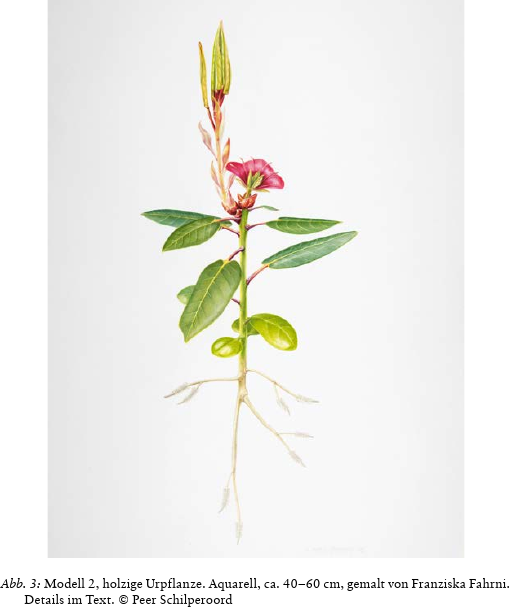Ein neues Modell für die Urpflanze – die mehrjährige Blütenpflanze
Export Article Citation as
- Plain text
- BibTeX
- RIS format
- Download price : € 6.00
Abstract:
Two distinct models of the ‘Urpflanze’ (archetypal plant) are discussed. The first is the well-known model of an annual dicotyledonous plant. The second new model represents the perennial dicotyledonous plant. The choice of a model channels the way the plant is viewed. The observer is disposed accordingly. With the model of the annual archetypal plant, he is guided along the sequence of the stem’s lateral organs from bottom to top, i.e. from cotyledon to carpel, and is stimulated to compare the organs with each other. The new model of the perennial archetypal plant invites to check the unfolding vegetative bud against the flower. The first model relates the flower to the vegetative shoot. So does the new model, but in addition the flower is correlated with the unfolding vegetative bud. Leaf metamorphosis of the unfurling bud exhibits a clear structure. Three zones can be discriminated: the ambient hardened bud scales, the fastly uncurling, coloured and decrepit bud scales and the stipe leaves. This structure is even more enhanced in the flower, where it corresponds with sepals, stamens and carpels.


